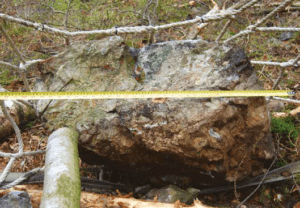This can often dictate the type of working method and equipment we use in addition to having to control the effects of gravity. Water runs downhill, so a significant factor in our diffuse pollution risk assessments is the steep ground on site. Other more solid items can also be subject to the effect of gravity and pose a safety risk should they also ‘run downhill’. Again, we must consider this possibility in our risk assessment.
The controls chosen should be consummate with the hazard and the risk.
What would be the consequence if an object ‘got away’ down steep ground? What is at the bottom of the slope? There are many controls that can be applied on site, for example, catch fencing, logs against tall stumps, tethering logs, digging boulders into pits and breaking large boulders up.
No single control is correct, they need to be assessed in line with the specifics of the site but, as a general principle, once an object begins to move and builds speed and momentum it becomes much harder to stop.
Remember!
- Assess the hazards onsite, e.g., the objects that can get away down a hill.
- Consider the potential receptors down the hill, including people, plant, roads, and buildings.
- Decide on appropriate control measures, implement them, and monitor them.
- The greater the risk, or more difficult the control, the more frequent the monitoring must be.
Photo showing a 900mm boulder caught in a portable net system we trialled a few years ago




